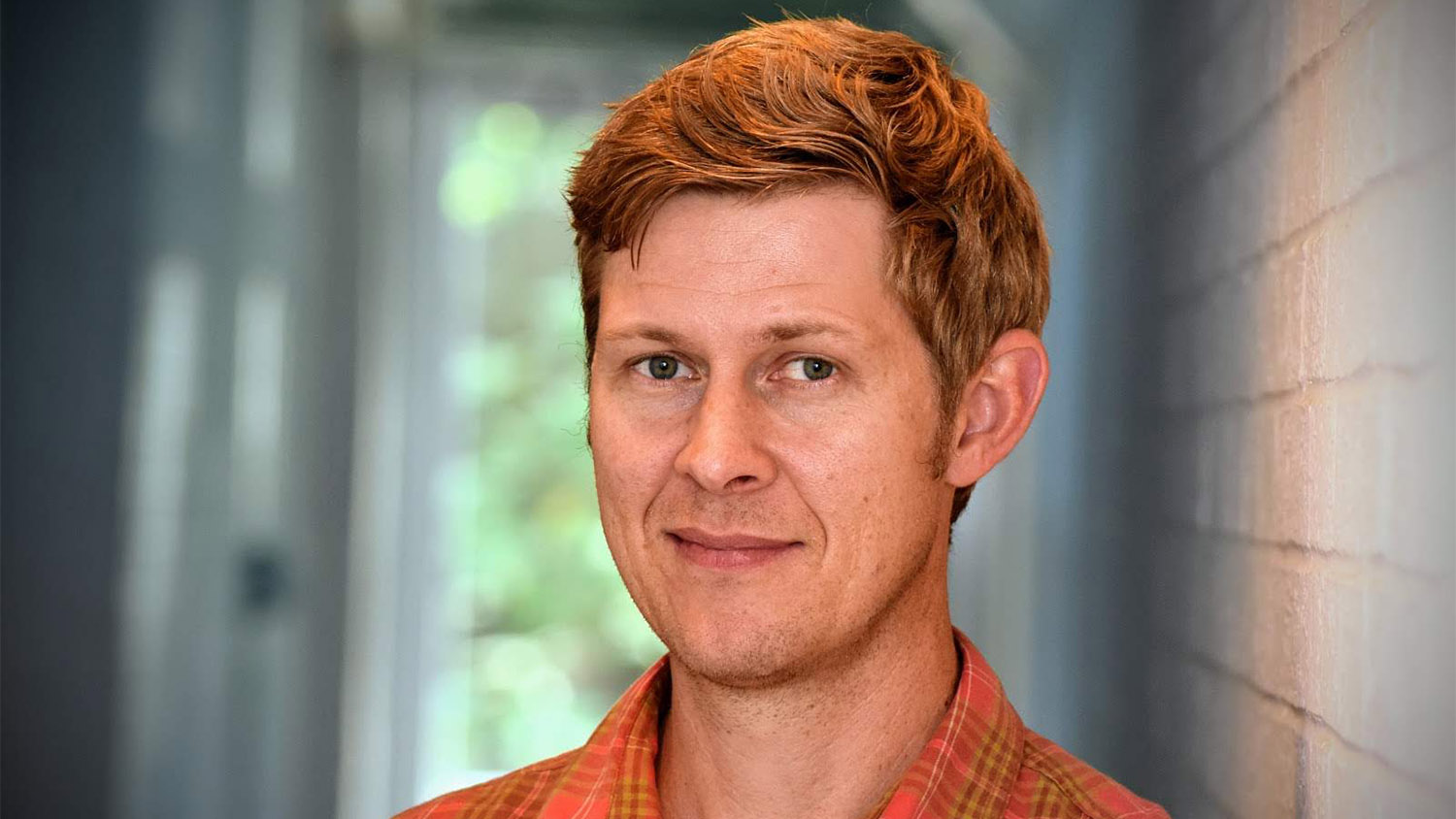Teaching Strategies for Online Group Work
Appendix A: Jamie Sue Reeds Assignment
Teaching Strategies for Online Groupwork – Home
Teaching Strategies for Online Groupwork – Annotated Bibliography
Appendix A – Sample Assignment
Appendix B – Sample Email
Team Building Exercise and Writing Assignments
by Jamie Sue Reed
(This is a three-week process including two writing assignments and a week for interviews.)
Week 1: LETTER OF APPLICATION AND RESUME ASSIGNMENT
PURPOSE
• To prepare you to most effectively apply for the job of your choice.
• To give you practice analyzing audience and implementing concepts of effective design.
• To provide the information necessary to fit you into the appropriate team for this class.
ASSIGNMENT
Write a resume relevant to your field of interest. (A lecture about resumes accompanies this.)
Write an interesting, formal letter of application to the E332 Company, address it to Head of HR of the class, the address should be the complete address for N.C. State University. The letter should correlate your background with the job description (below) and it should make key ideas prominent.
Include in the letter your availability and preferred method of meeting with your group. You have the option of holding synchronous meetings online in chat rooms (available on WebCT), asynchronous meetings in Discussion Forum, or in-person meetings. Include in your letter specific areas of professional interest and goals.
For all documents in this class the body must be in Times, heading fonts are optional but should look professional, and the body type should be no smaller than 11 point.
JOB DESCRIPTIONS
You are assembling a team of proposal writers. Every person on the team will be required to write four single-spaced pages for the proposal and research his or her individual area of the proposal. Therefore, every team member must have training in business practices, be familiar with business research methods, have experience with collaboration, and have strong writing skills. In addition to those key skills, see duties/qualifications for the individual positions:
Project Manager
• Schedules meetings, takes minutes and promptly distributes them to team and supervisor
• Acts as liaison with supervisor about team progress
• Utilizes motivational and team-building techniques
• Develops schedule of deadlines and monitors progress
• Keeps record of authorship of sections
• Requires organizational, communication and job management skills
Proposal Manager
• Creates style sheet for proposal
• Edits proposal for unity in writing style, for conciseness, headings, etc.
• Edits for unity in design
• Requires strong English skills and attention to detail
Graphics Manager
• Creates graphs and charts for proposal
• Designs presentation graphs
• Develops attractive and appropriate document design of proposal
• Requires strong computer design skills and a sense of balance in design
Finance Manager
• Researches financial aspect of proposal
• Develops logical methodology for financial projections
• Provides start-up and operating budgets for businesses, sales projections, break-even analyses and so on
• Requires knowledge of Excel, financial projections, financial analysis, general accounting
SAMPLE DOCUMENT:
See page 401 of the Franklin Covey Style Guide under Model Documents for correct format. Read the section entitled “Letters” for further formatting information.
1208 Chumley Drive
Apex , NC 27501
September 1, 2004
North Carolina State University
Tompkins Hall
Box 8105
Raleigh, N.C. 27695
Dear English 332-015 Class:
Subject: Job Application for Project Manager
I was pleased to discover the opening for a Project Manager you advertised on the ENG 332 website because it closely relates to my interests, skills, abilities, and experience.
My qualifications include:
• Communication, teamwork, leadership, and mentoring skills learned as camp counselor at the YMCA for four years and through completion of three team projects in major courses.
• Attention to details learned as secretary of fraternity for two years.
• Organizing, meeting deadlines, and tracking projects practiced as secretary for a law firm for one year.
• Concise and clear writing learned while earning an A- average in college English classes.
These qualities will allow me to successfully perform as the project manager for your team.
I would like to work in a group that is hard-working, dedicated, and willing to prioritize their schedules to meet project deadlines. Additionally, my future interests lie in Sports Marketing, and I would like to join a team with similar goals.
As you can determine by my resume, I am a highly motivated and dedicated group member, and my skills and experiences will be a strong asset to the team. I am available Monday through Friday after 1pm, and any time on weekends. You may reach me by email at student@ncsu.edu; through instant messaging at CanesFan; or by phone at (919) 555-2518.
Sincerely,
Student Name Here
Enclosure
POWER WORDS
This is a great list of professional words that will set the right tone for any business communication and particularly resumes and cover letters. Avoid the simple verbs “make,” “worked,” and “did” if you can help it, and use more professional, precise verbs in their place.
accelerated
accomplished
achieved
administered
advised
analyzed
appointed
arranged
assisted
attained
balanced
budgeted
built
calculated
cataloged
chaired
collaborated
competitive advantage
compiled
composed
computed
conducted
constructed
consulted
corporate culture
courteous
created
delegated
demonstrated
designed
developed
devised
directed
diverse
edited
educated
encouraged
established
evaluated
examined
executed
expanded
expedited
extracted
facilitated
formulated
founded
generated
hands-on
headed
helped
identified
illustrated
implemented
improved
increased
initiated
innovated
instructed
integrated
interpreted
launched
leadership
maintained
managed
marketed
mediated
monitored
negotiated
operated
optimizing
organized
performed
persuaded
planned
prepared
presented
prioritized
processed
produced
professional
programmed
promoted
proposed
provided
published
recruited
regulated
reorganized
represented
researched
resolved
responsible
restored
restructured
retrieved
reviewed
revised
scheduled
shaped
sold
solved
strategic
streamlined
summarized
supervised
synergy
taught
trained
upgraded
utilized
worked
wrote
Week 2: BUILDING YOUR TEAM
The three-step process of building your team and conducting your research for the interview memo will be time consuming. You will want to put a lot of time, thought, and effort into this, as your choice of teammates will affect your experience over the rest of the semester.
You will accomplish the tasks in this order:
1. Review resumes
2. Interview candidates
3. Assemble your team
STEP 1: REVIEW RESUMES. How do you decide whom to interview?
• Develop a list of criteria for the position so that you know what you are seeking. Primarily you’ll need to explore the candidate’s writing and researching skills. Also, include skills you seek in a teammate, your values regarding deadlines and work habits, the candidate’s position in their education (major classes completed), their experience and interests, their availability, their preferred communication modes, etc.
• Aim to assemble a team with diverse skills, such as someone who is detail-oriented, someone who is big-picture, individuals with document design and finance skills.
• Look for candidates who submit the assignment on time, and who follow directions.
• Look for candidates who have not changed jobs frequently, who have held jobs that prepare them to research, write and edit professional proposals.
• Look for a resume that is organized and easy to read, one that is attractive and which highlights key ideas.
• Look for a candidate who skillfully focuses his job descriptions on applicable skills.
• Be critical! You have so many qualified candidates. Examine each candidate looking for some reason to rule her out.
STEP 2: INTERVIEW TWO CANDIDATES
Make yourself available to be interviewed when asked. If no one asks to interview you, that’s fine. Set aside at least 20 minutes for each in-person interview. If a live interview is impossible, then the interview must at least be in synchronous communication. Exchanging emails is not an interview; it does not allow you to determine how quickly a person responds to queries, and it is very hard to determine personality through email. Alternate interview formats might be chat or telephonic.
As the Candidate:
• Confirm your appointment the day before. An email confirmation would be appropriate.
• Bring or email supporting material. For all positions, you must at least provide a writing sample. Graphics candidates should also provide an example of document design.
• Ask questions. If you do not ask the interviewer anything, you will seem disinterested and unintelligent.
• Make a conscious first impression. Make eye contact, smile, give a firm handshake, and wait until the interviewer sits down before you do.
As the Interviewer:
• Write your questions before the interview, and use them as a starting point. If you Google “job interview questions,” you will find hundreds of sites with lists of good questions.
• Break the ice in a warm way to relax the candidate.
• Bring the interviewee into a conversation rather than just a mechanical Q&A.
• Ask open-ended questions that allow the candidate a variety of possible responses.
• Tailor specific questions to the position.
• Don’t cut the interviewee off. Wait until he is done responding to a question and notice if the person has short/clipped answers, answers the questions concisely, or goes on and on.
• Throw a curveball! Ask challenging questions. Ask the candidate to demonstrate a skill. Give a grammar quiz or an editing quiz. Be creative.
• Write everything down to support your written analysis.
STEP 3: ASSEMBLE YOUR TEAM
Aim to assemble teams of four. If you assemble a team of three, I may add some personnel. Everyone will not find teams, but don’t worry: I will place you.
Here are the rules for assembling your team.
1. You may only make an offer to someone you have interviewed.
2. After Person One makes the offer and Person Two accepts, Person Two then recruits Person Three, and Person Three hires Person Four.
3. After assembled, your team should negotiate who will assume each title. It will not be possible for everyone to keep the position they applied for, so be flexible.
4. Your project manager should email me your team roster by the date posted on the calendar. Late submissions may find themselves placed on other teams.
Week 3: WRITING YOUR HIRING MEMO
Write a memo about the candidates you interviewed. Make it at least two pages single-spaced, using Times, 11 point.
PURPOSE• Analyzing your reading audience and meeting their expectations.
• Writing documents that address purposes, audiences, and conventions of professional contexts: business, nonprofit, and public organizations.
• Avoiding subjective terminology and focusing on concrete information.
• Applying principles of document design professionally.
SCENARIO
As you found out in the last two weeks, you are employed with English 332 and have been charged with reviewing applications and interviewing the top candidates for a proposal team. As your supervisor in the context of this memo, I hold ultimate hiring decision. In this memo, you may recommend hiring someone whom you ultimately did not hire–the actual process of team assembly will occur independently of this writing assignment.
You will personally be working on a team with the new hires; therefore, you may have different criteria for the candidates than your reading audience does. Your reader is primarily interested in the candidates’ hard skills: writing, research, grade point average, as well as the candidate’s general professionalism. You are probably more concerned about how the candidate functions with a team, and other personality and work habit issues. Position your argument to emphasize your audience’s interest.
TIPS ON MEMO CONTENT
• The introduction should establish context. Explain what you were asked to do and what you did.
• Organize the body with subheadings. Each paragraph in the body should focus on one main idea.
• The conclusion should naturally result from the evidence. It should not be before the evidence–in other words, don’t put your conclusion in the introduction. Convince your audience of your findings before you state your recommendation.
Save your reader time! Every sentence should move the readers to a hiring decision and every sentence should make a point. Do these examples all make relevant points about the qualifications of the candidate?
• She is the first candidate I interviewed. (Superfluous)
• We started with small talk. (Alone, this statement is superfluous, but you could use it to make a point about the candidate’s interpersonal skills.)
• He is a junior majoring in marketing. (Significant)
• He is involved in a number of clubs. (Significant–make sure you provide evaluation of this comment. What should the reader think about the person’s club involvement? That he/she is busy? Is dedicated? Has applicable experience? Has leadership qualities?)
Use different kinds of evidence to build credibility You will provide three types of evidence: reportage, analysis, and evaluation. Reportage relates what you saw or heard. Analysis breaks the evidence down into its component parts. Evaluation tells the reader the value of the evidence. Use all three to build your argument and to support every major point. For example:
• Reportage: He explained that he manages his time by setting small goals that lead him step by step to completion of major goals.
• Analysis: His resume says he works full time and goes to school, while maintaining a 3.7 GPA.
• Evaluation. He seems to be a strong time manager, a critical skill when working with deadlines.
Another example:
• Reportage: She says she is a good editor.
• Analysis: I noticed multiple typos in her resume.
• Evaluation. The evidence does not support her contention. Her editing does not appear to meet E332’s needs.
Avoid opinions or subjective-sounding statements. When you tell the reader your opinion of the candidate, like, “he was professional,” you are asking the reader to trust your judgment. When you analyze the candidate with objective observations, like, “He wore a collared shirt and his clothes were pressed,” that provides the evidence that led you to your opinion, and it builds trust in your evaluation.
Put yourself in the background by avoiding this clunky structure like this:
• I asked her how she liked English 111. She said she liked it.
Instead, focus on the subject. It doesn’t matter what you asked. What matters is what the candidate said:
• The candidate said she enjoyed English 111.
Word Choice
• Avoid sexist language like “lady” and “manpower.”
• Avoid biased language like “young.”
• Use candidate’s full name on first mention, then consistently use first or last name on subsequent mention.
- Categories:


